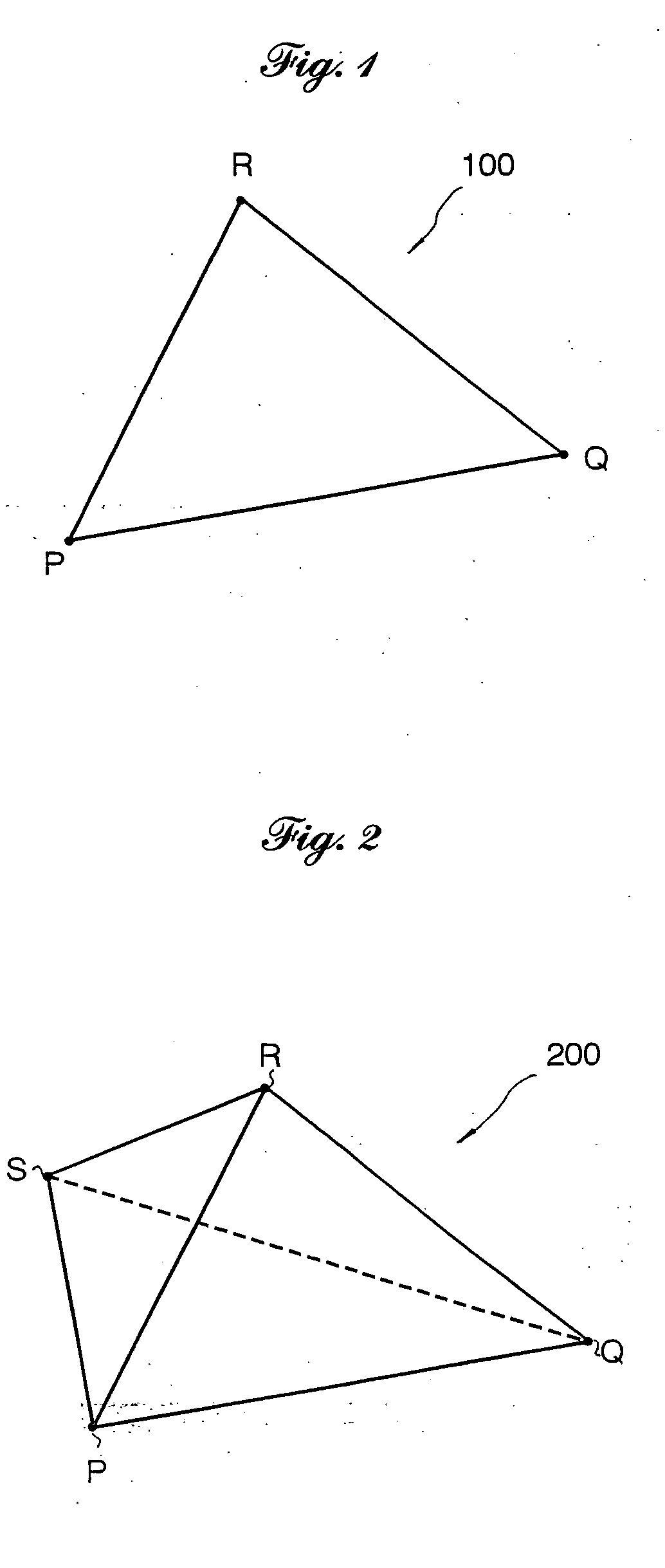Method, computer program product and data structure for representing two- or three-dimensional object modeling
a two-dimensional object and data structure technology, applied in the direction of roads, instruments, traffic restrictions, etc., can solve the problems of difficult to bring data for interface between the planar and curved surfaces that are difficult to be consistent with each other, and achieve the effect of reducing the storage requiremen
- Summary
- Abstract
- Description
- Claims
- Application Information
AI Technical Summary
Benefits of technology
Problems solved by technology
Method used
Image
Examples
Embodiment Construction
[0058] The term “constitutive point” as used herein shall mean and refer to each of the constitutive points by which a graph is defined. The term “adjacent point” as used herein shall mean and refer to one of endpoints of a line segment, a straight line or a curved line, relative to another endpoint of the line segment. In other words, opposite endpoints of a line segment are directly adjacent relatively to each other. The term “point data” of a constitutive point as used herein shall mean and refer to the data for a representation of topological and geometric information of constitutive point of a graph.
[0059] Referring to the accompanying drawings in detail, and, in particular, to FIGS. 1 and 2 illustrating an embedded graph representation of a polygonal or two-dimensional object (which is hereafter referred to as a graph for simplicity)100, namely a triangle PQR, and an embedded graph representation of a polyhedral or three-dimensional object (which is hereafter referred to as a...
PUM
 Login to View More
Login to View More Abstract
Description
Claims
Application Information
 Login to View More
Login to View More - R&D
- Intellectual Property
- Life Sciences
- Materials
- Tech Scout
- Unparalleled Data Quality
- Higher Quality Content
- 60% Fewer Hallucinations
Browse by: Latest US Patents, China's latest patents, Technical Efficacy Thesaurus, Application Domain, Technology Topic, Popular Technical Reports.
© 2025 PatSnap. All rights reserved.Legal|Privacy policy|Modern Slavery Act Transparency Statement|Sitemap|About US| Contact US: help@patsnap.com



